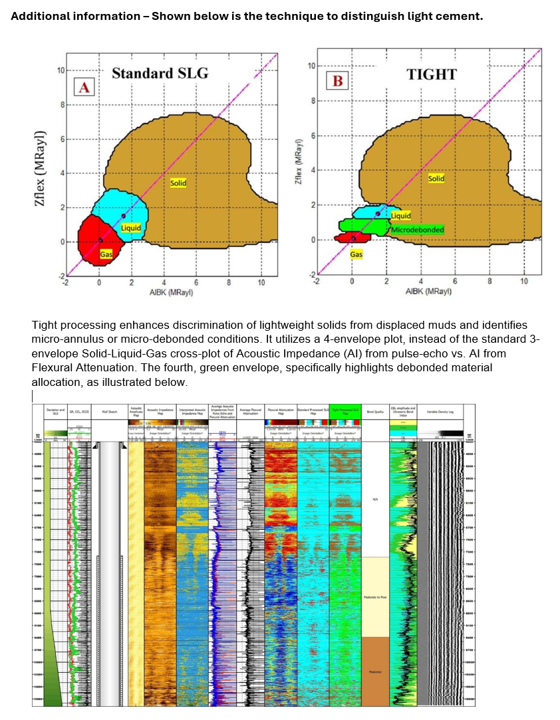Presenter
Amit Govil from SLB - RP-Intervention Advisor
Co-authors
Roy Middleton (CoP), Guillermo Palacio (SLB), Dan Muller (CoP)
Abstract
Lightweight cement evaluation using Tight processing from Pulse-Echo and Pitch-Catch data.
Introduction – Motivation
Lightweight cements, with particles of lower specific gravity than Portland cement, effectively prevent lost circulation in weak zones by reducing slurry density. Foamed cement, injected with gas like nitrogen, create lightweight dispersions with low specific gravity and good mechanical performance. However, the reduced slurry density makes logging lightweight cement challenging. The use of lightweight cement is increasing on the Norwegian continental shelf. In 2024, to understand interpretation challenges, Havtil conducted a workshop inviting major operators, service companies along with 3rd party consultants to understand available understanding, literature and global market. One of the conclusions was lack of global publication along with the training and competence of the Petro technical experts. Study is available as a reference on Havtil website
Procedure – Methods
Cement evaluation in wells uses sonic tools to measure signal amplitude and ultrasonic tools to assess acoustic impedance. Conventional cement has an acoustic impedance of 4.5 to 6 MRayl, while lightweight cement ranges from 3 to 4.5 MRayl due to its lower density. Low acoustic impedance thresholds are 0.3 MRayl for gas and ~2.6 MRayl for liquid. Potential inaccuracies in mud properties measurement as input can make solid detection in lightweight cement more challenging.
A key innovation in our approach involves a pre-analysis of pitch-catch data, a critical factor in distinguishing materials within the annulus. This enhancement has proven instrumental in identifying a different material besides fluids or formation. The refined sensitivity provided by pitch-catch data has unveiled previously undetected details.
Results/Observations
Tight processing is a novel technique enhancing lightweight cement evaluation by leveraging both pitch-catch and pulse-echo measurements. This method uses intricate processing to extract valuable insights and utilizes a 4-envelope plot instead of the standard 3-envelope plot, improving the discrimination of lightweight solids from displaced muds and identifying micro-annulus or micro-debonded conditions. Pre-analysis of pitch-catch data distinguishes materials within the annulus, offering refined sensitivity and uncovering previously undetected details.
Conclusion
These findings affirm tight processing’s efficacy in overcoming challenges associated with lightweight and foam cements. The integration of pitch-catch data and pulse-echo measurements in this approach represents a novel contribution to the field. By elucidating the challenges specific to lightweight cements, our technique offers a valuable tool for the oil and gas industry to ensure the integrity of well constructions, marking a significant progress in well logging methodologies.

Biography
Amit Govil joined SLB in 1993 as a Wireline Field Engineer. Since 2021, Amit has been working as Advisor in Reservoir Performance Intervention, supporting Operators in Scandinavia. He has authored multiple technical papers and is engaged with NORCE (Norwegian Research on bond application in P&A). Since 2017, he is involved with SPE Stavanger Section, as a Treasurer & 2023 as lead for technical night lead for ICoTA Scandinavia